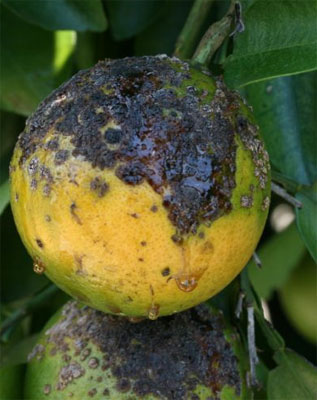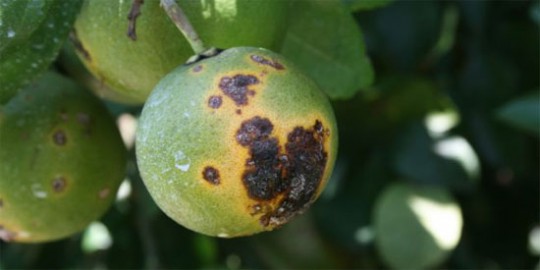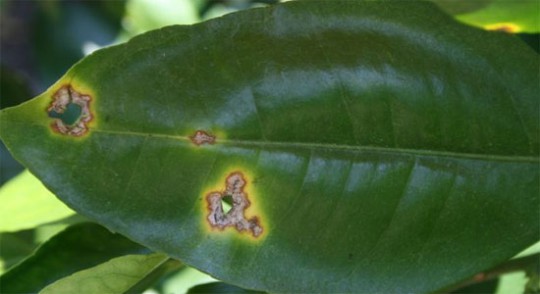Citrus Canker Discovered In Santa Rosa County
November 26, 2013
Citrus canker is a serious disease of citrus trees that was recently confirmed for the first time in Santa Rosa County.
Citrus canker has been a major pest of citrus in south and central Florida. It is economically damaging to the commercial industry and is also problematic to homeowners because it causes premature fruit drop, discolored fruit, and eventually causes the tree to become unproductive.
Canker, caused by the bacterial pathogen Xanthomonas citri subsp. citri, was first introduced in 1912 into Florida and was declared eradicated in 1933.
The disease was found again in the Tampa area on citrus in 1986. It was declared eradicated in 1994, but once again was found in 1995 in Miami.
 This time, the disease was not successfully eradicated in part because hurricanes made the disease too widespread to control.
This time, the disease was not successfully eradicated in part because hurricanes made the disease too widespread to control.
Despite its prevalence in south and central Florida, this disease has not been known in the Panhandle. The University of Florida and the Florida Department of of Agriculture and Consumer Services’ Division of Plant Industry will be assessing the extent of the disease in Santa Rosa County in the coming months.
One of the best indicators of canker is presence of lesions, diseased spots, on the upper and lower surfaces of the leaves. The lesions will be raised and have a rough surface and will be surrounded by yellow halos. Similar lesions may be present on the fruit and stems as well.
The disease is highly contagious to citrus only and spreads rapidly through wind, rain and via people on their hands, clothes, and tools.
Do not transport any plant material that shows symptoms of canker. Decontamination practices should be used when going from one citrus tree to the next. Hand washing with soap and water for 20 seconds or more to eliminate bacterium on the skin should be practiced as well as using alcohol-based hand sanitizers. Pruning tools or other tools that come into contact with citrus should be disinfected by a fresh solution of 1 ounce of household bleach to 1 gallon of water. An old or dirty bleach solution is not able to disinfect because the chemical is no longer active.
Grapefruit, Navel orange, early orange varieties, lemon and lime are most susceptible citrus to canker infection. Hamlins and tangelos are less susceptible. Valencia, some hybrids and Satsuma and other tangerines are the most resistant to the disease. However, all citrus is vulnerable to some extent.
In order reduce the likelihood of citrus canker choose the most resistant varieties of citrus, practice proper sanitation procedures, and purchase only certified citrus from registered nurseries within the state of Florida. It is unlawful to purchase citrus trees from another state and bring them into Florida unless the proper permitting is in place.
If you suspect that your citrus trees may have citrus canker please contact the Division of Plant Industry’s Helpline Center at 1-888-397-1517 before taking any action to reduce accidental spread of this disease.
Courtesy photos for NorthEscambia.com, click to enlarge.
Comments
One Response to “Citrus Canker Discovered In Santa Rosa County”





Having seen this happen in Palm Beach County in the 80’s, let me tell you. This is a big deal. Entire groves were destroyed by the ag dept. Residential trees also. They did not have to be infected, just close enough proximity. When you pulled your truck into a grove, it was sprayed down and your shoes also had to be treated. This is just the beginning.